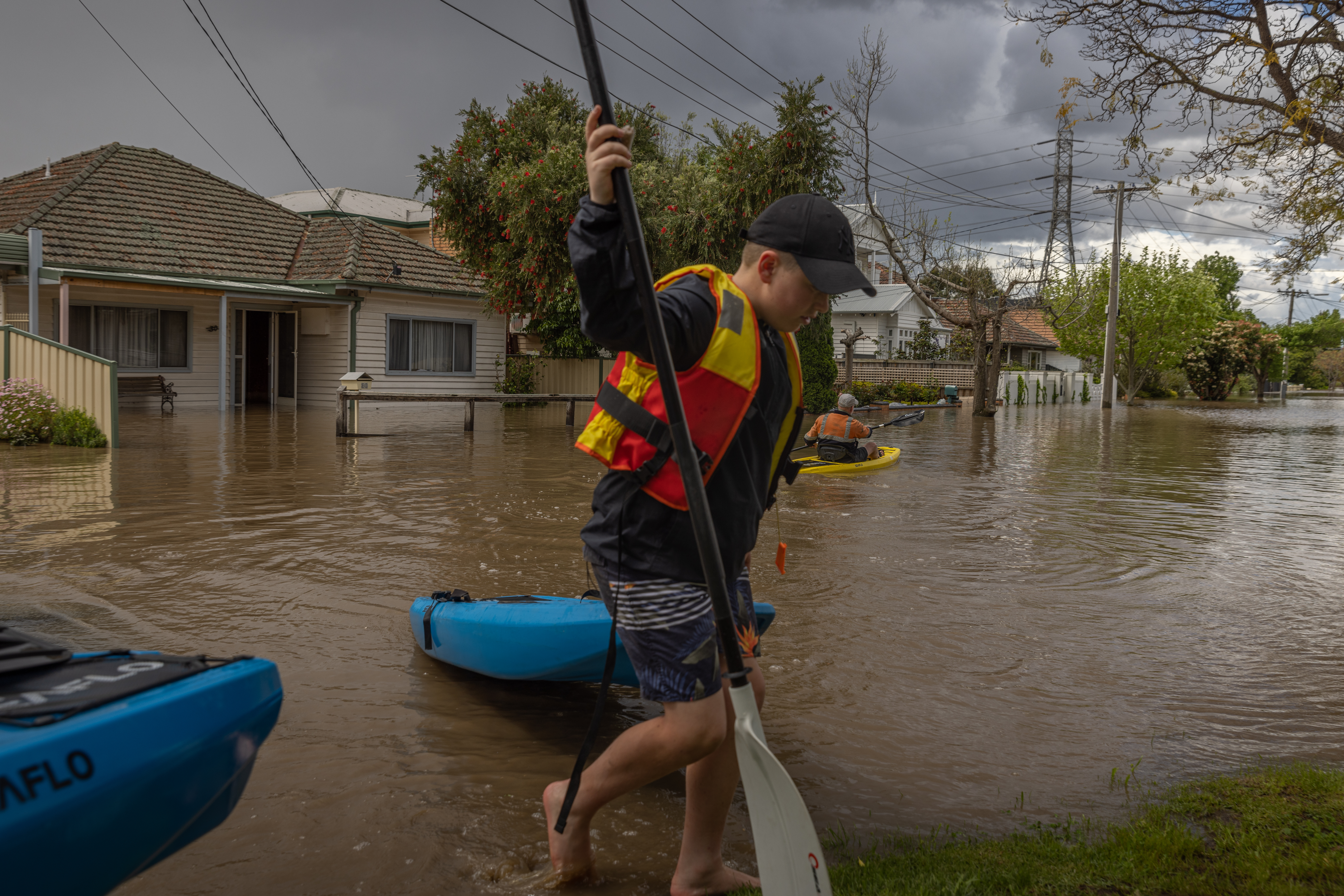Financial Regulators Must Prioritize Climate Risk

A resident canoeing down a flooded street on October 14, 2022 in Victoria, Australia.
Photo: Asanka Ratnayake/Getty Images
Credit where credit is due: The Inflation Reduction Act (IRA) signed into law in August includes the largest investment in climate action in U.S. history. The landmark law is chock full of incentives, from tax credits for electric vehicles to rebates for heat pumps and other energy-efficient appliances, that will help reduce greenhouse gas (GHG) emissions — up to 40% by 2030 — and contribute to the protection and restoration of critical ecosystems.
Despite this success, the twin crises of climate change and biodiversity loss still pose potentially the greatest threat to the financial sector in the 21st century. To address the risks and impacts these twin crises are imposing and will impose over the next decades, we need the U.S. financial sector to step up as never before.
Today’s Environmental Impacts Are Tomorrow’s Financial Risks
Central banks and financial supervisors — whose primary function is to safeguard financial and price stability — have a precautionary responsibility to help reduce the risks associated with greenhouse gas emissions and ensure a nature-positive future where natural assets are protected and preserved.
Without urgent and aggressive action, extreme weather events, rising sea levels, droughts, floods and other environmental impacts will increasingly threaten global supply chains and production, causing sudden economic shocks and leading to major increases in inflation.
It’s already happening. In 2021, the U.S. smashed historical records with 20 separate weather and climate disasters, each one resulting in at least $1 billion in damages. So far, 2022 is on track for the same. The ongoing California drought alone has already cost nearly $2 billion and 14,000 jobs.
The main culprit behind climate change, biodiversity loss, and their associated impacts is unsustainable economic activities, which are often heavily financed by lenders. These activities increase greenhouse gas emissions and drive the loss and conversion of lands that are essential for both carbon sequestration and biodiversity conservation.
Hopeful Signs
Now for the good news: A global shift toward climate and nature-related risk frameworks and disclosures is currently underway, beginning with voluntary early adopters and moving toward mandates from governments.
These concepts are acknowledged widely by financial regulators and their constituent coalitions like The Network for Greening the Financial System (NGFS), of which the U.S. Federal Reserve and other U.S. financial supervisors are members. The direction in which the market is moving is encouraging, but we need economic actors to embrace faster and more robust action.
U.S. financial regulators should take the lessons from their management of the 2007/2008 financial crisis and the COVID-19 pandemic and apply them to the risks posed by climate change and biodiversity loss. Here, too, urgency is needed, in the form of decisive, pre-emptive steps to mitigate future risks, despite the inherent uncertainty surrounding specific environmental impacts.
Integrate Climate Risk Into Everyday Decision-Making
As part of a precautionary approach, regulators need to integrate environment-related risks and impacts into their daily decision-making processes and use every available regulatory and supervisory tool to promote emissions reductions and recover and restore biodiversity.
They should do so in coordination with their global peers, by leveraging governments and international fora to establish global climate and biodiversity targets, and by following the guidance from leading frameworks like the Taskforce on Climate-related Financial Disclosures (TCFD) and the Taskforce on Nature-related Financial Disclosures (TNFD).
Regulators will also benefit from collaboration with non-governmental organizations, environmental think tanks and scientific institutions. For example, WWF’s Greening Financial Regulation Initiative (GFRI), launched on September 7, offers technical roadmaps to help central banks and financial supervisors reduce risk in the economy and increase price stability over the long run by driving the transition to a decarbonized and nature-positive economy.
As the GFRI framework lays out, regulators must focus on being up front about which sectors, businesses and economic activities are responsible for the most emissions and the highest biodiversity loss and appropriately assess and manage the financial risks and negative impacts on future resources, as this ultimately poses the greatest risk to our economy.
Net Zero Is a Risk Reduction Tool
The climate provisions in the Inflation Reduction Act represent a historic and much-needed step forward toward a clean energy and nature-positive future. Financial regulators can and must build on this fresh momentum to help close the emissions gap and protect Earth’s finite natural assets for current and future generations.
In fact, new research has found that adopting a more sustainable approach to just four central bank policies — capital requirements, collateral frameworks, asset purchases and refinancing operations — could deliver 5-12% of the emissions cuts needed to achieve net-zero by 2050. Achieving net zero by 2050 will result in risk-reduction and price stability.
This is a crucial year for the world to lock in a financial path toward a sustainable future — one in which climate-related risk and impact management are baked into our economy and markets recognize the value of nature as the essential asset it truly is. It’s time for central banks and financial supervisors around the world — and especially in the U.S. — to write their roadmap to a nature-positive future and pursue that path with the urgency and ambition needed to surmount our intertwined environmental and economic challenges.






